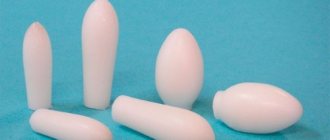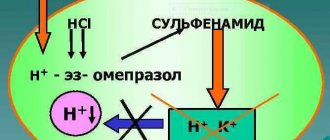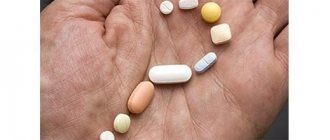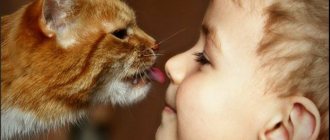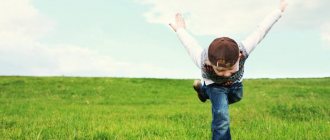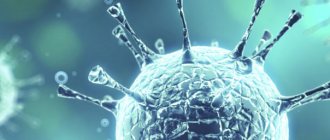Hyperactivity disorder (ADHD) is currently recognized as one of the most common behavioral disorders. As a rule, it is diagnosed in the first years of life, when hyperactivity . Many believe that this disease does not occur after adolescence. In reality, adults face hyperactivity.
Medical research shows that ADHD, even with early treatment, persists in 65% of those diagnosed with the disease. In some cases, psychiatrists and psychologists diagnose hyperactivity in a patient for the first time as an adult. This is often due to an error in the diagnosis earlier. They are often mistakenly attributed to manifestations of depressive disorders or anxiety syndrome. To successfully relieve symptoms, hyperactivity treatment is recommended at a very early age.
What to do if your child has hyperactivity
ADHD is most often diagnosed in childhood. Most often, parents of restless babies or teaching staff of children's educational institutions turn to specialists. The child understands others well. He hears and fulfills the requests of adults, but is too impulsive to accurately carry out the instructions received.
Adults often try to justify all the child’s pranks with this diagnosis. In reality, it is confirmed in no more than 3-5% of babies. Most of them are boys. The course of the disease differs:
- boys show a tendency to aggression and are characterized by hypertrophied disobedience;
- girls suffer from inattention, which can lead to learning problems.
In a third of children, ADHD goes away on its own during adolescence, without the use of specialized medical practices and medications.
Parents hold two polar points of view on the treatment of ADHD. About half consider the possibility of such a pathology to be far-fetched and refuse therapy, believing that the disorder will go away on its own with age. On the contrary, many parents exaggerate the danger of this disease for the development of the child. Hyperactivity requires mandatory monitoring by doctors and appropriate adjustment; in most cases, the pathology is successfully cured. Parents need:
- undergo a comprehensive examination to accurately establish a diagnosis;
- follow the specialist’s recommendations to create the most comfortable conditions for the child, carefully monitor the baby’s condition;
- fulfill all requirements, go through all necessary procedures;
- attend a consultation with a family psychologist.
A child with ADHD is characterized by an increased level of emotionality. He needs to be praised often, increasing self-esteem and self-confidence. In games, it is recommended to exclude competitive aspects that can lead to negative effects on the psyche. It is imperative to set boundaries for the child’s behavior. For example, give simple and executable instructions (take out the trash, wash your cup after yourself and other small tasks). The baby should grow up in the most favorable conditions, but clearly understand the boundaries of behavior so as not to become overly spoiled.
It is advisable to carry out diagnostics in a specialized medical center. Only in such a situation can a neurological disorder be confirmed, excluding simple increased activity or poor upbringing. A preliminary assessment of the condition can be carried out at a local clinic.
What is the best sedative for children?
All the drugs presented in the review demonstrate a safe composition, effectiveness, and comprehensive assistance to the child’s body. Choosing which product will help you buy one is not so easy, therefore, based on a comparison of the advantages and disadvantages, Vyborexperta.ru recommends:
- Tenoten for children is an anti-anxiety drug with a nootropic effect;
- Glycine is the people's choice, an old, time-tested sedative nootropic;
- Dormikind - homeopathic sleeping pills;
- Notta is a natural effective anxiolytic drug;
- Planetary Herbals is a dietary supplement with a good combination of herbal and mineral components;
- HiPP Linden blossom with lemon balm - herbal tea for sound sleep for a newborn and a young mother.
Every caring parent wants to find a safe remedy that can quickly calm a hyperactive, excited baby. Any alarming symptoms should be a reason to contact a specialist. Do not self-medicate, as we are talking about an unstable, vulnerable organism.
Treatment of hyperactivity in children
In medical practice, several options are used to treat hyperactivity in children. First of all, a thorough examination of the small patient is carried out. One of the main goals is to exclude potential pathology.
Further, experts prefer to prescribe non-drug courses. Psychological, pedagogical and psychological methods are used in the work. Participation in the treatment process of the whole family becomes an important condition. For this purpose, specialized family practices are used. This will allow you to establish contact with a child suffering from hyperactivity and develop a treatment program.
In acute situations and in the absence of effect in treatment using psychological classes and trainings, the following medications are selected:
- depressants are prescribed, Amitriptyline, Methylphenidate;
- Focalin, Vyvanse, Methylin contribute to increasing the level of concentration;
- glycine helps improve brain function;
- nootropic drugs Phenibut, Pantogam and others.
All of these medications are used simultaneously in the treatment of a child in exceptional cases. An individual therapy program is developed for each little patient.
Rating of sedatives for children
Sedatives can be medicinal, homeopathic or folk remedies; in any case, you need to consult a neurologist to determine the diagnosis. To narrow down the search, the VyborExperta project team collected the best proposals from each group, paying attention to the following criteria:
- Type of medicine;
- Composition, origin of components;
- Principle of action, therapeutic properties of the formula;
- Speed of action, how quickly relief occurs;
- Release form, solid or liquid;
- From what age is admission allowed?
- Indications for what symptoms it is used;
- Features of therapy, dosage regimen, dosage, course duration;
- Restrictions, contraindications;
- Safety, likelihood of side effects.
We have selected for you drugs with the best price-effectiveness ratio. These are 10 nominees of domestic and imported production. Reviews from doctors and parents identified the strengths and weaknesses of each product.
Hyperactivity syndrome in children
It is possible to assume that a child has such a diagnosis at a very early age. Already in the first months the child sleeps poorly. He has an excessively violent reaction to noise and bright light. He reacts violently to hygiene procedures and gets overexcited during the simplest games. There is a slight lag behind the norm in psychomotor skills.
The presence of the disease can be determined at the age of three years. Psychologists mark this age as the first turning point. All kids become capricious and demanding. Children with hyperactivity have a delay in speech development, movements are fussy and chaotic.
The syndrome is accompanied by physiological disorders. The baby often experiences headaches, increased fatigue, and is diagnosed with enuresis and nervous tics.
In the preschool years, children with the syndrome are slower than their peers to learn new material, which is explained by their insufficient ability to concentrate. This situation continues after entering school. The lag in the assimilation of knowledge is caused not by low mental abilities, but by the lack of the ability to concentrate attention and fully remember all the new material.
Emerging problems provoke increased sensitivity and aggressiveness in the child. He becomes anxious and whiny, and phobias develop. As a child with ADHD grows up, self-esteem decreases and complexes arise. Without treatment, they can last a lifetime.
The best soothing syrups for children
Syrup is the most used form of sedative for children under one year old. It is distinguished by its safe composition, mild operating principle, and pleasant taste. The liquid consistency reaches its destination faster and rarely has contraindications or side effects.
little hare
One of the most popular, according to reviews, sedatives for children is “Hare” from the Russian manufacturer Alkoy-Holding. It differs from analogues in its completely natural composition, the absence of alcohols, dyes, and chemical components. In this regard, doctors prescribe this syrup to infants and children prone to allergic reactions. It is indicated for insomnia, neuroses, restless behavior, and excessive mental stress.
Sedative functions are guaranteed by a complex of herbs - analgesic mint, valerian roots to improve sleep and support the endocrine system, lemon balm to relieve nervous tension, motherwort to normalize blood pressure, diuretic barberry, cumin.
They are supplemented with vitamin B6 and ascorbic acid, which improve the absorption of important substances. The drug is approved from the age of 3, in other cases according to a doctor’s indication.
Advantages:
- Natural components;
- Vitamin supplements;
- Safe formula;
- Comprehensive support for the body;
- Good taste;
- Inexpensive.
Flaws:
- Sugar;
- Only from 3 years old.
Regular use of such a sedative stabilizes mood, but does not cause drowsiness or lethargy. According to the instructions, the syrup should be given three times a day with food, 5-10 ml. The duration of the course is from 2 weeks or longer, the effect is cumulative.
Planetary Herbals
Another natural herbal sedative, but from the American brand Planetary Herbals. This is a dietary supplement with a multicomponent combination of medicinal herbs, fruit extracts, essential oils, amino acids and minerals.
Plants include chamomile, cereal seeds, hawthorn berries, licorice root, wild amla berries, etc. They are supplemented with anise essential oil, magnesium and taurine.
The thick, sweet consistency smells like anise, the taste has hints of cloves. Age indication: from 1 year of age. For older children, a tablet form is provided; for schoolchildren, the drug is recommended to increase concentration.
Best of all, this composition helps to cope with nighttime restlessness, awakenings, and crying. At the same time, it does not cause addiction, drowsiness, or depression.
Advantages:
- Thoughtful composition;
- Pleasant aroma;
- Establishing sleep;
- Improved concentration;
- Economical consumption;
- Performance.
Flaws:
- Specific taste;
- Price.
Shake the bottle before use. For a child 1-5 years old, give 1/4 teaspoon of syrup three times a day, for children over 5 years old - 1/2 teaspoon. Mixing with water and drinks is allowed. For ease of dosing, you can use a syringe without a needle.
Diagnosis of hyperactivity
Children suspected of having ADHD are under the constant supervision of their attending pediatrician. In this case, a neurological diagnosis is not established earlier than 5-7 years. This is due to the developmental characteristics of preschool children. Child psychologists try to diagnose only after the completion of the transitional age crises of 3 and 7 years.
Diagnosis is carried out by a child psychologist together with a neurologist and pediatrician. Consultation with several specialists makes it possible to exclude other diagnoses that lead to increased activity and excitability. Also, during diagnosis, doctors reassure parents that their baby’s increased excitability, restlessness, is only a manifestation of character.
The baby’s condition is monitored from the first weeks of life. If hyperactivity is suspected, the doctor conducts a thorough analysis of the child’s behavior in everyday life.
Diagnostics includes three stages:
- a conversation between a child psychologist and the child’s parents;
- researching;
- obtaining advice from the pediatrician treating the baby.
To confirm the diagnosis in a hospital setting, EEG, REG, M-Echo, MRI are performed. Before conducting research, it is recommended to keep your child busy with an interesting game. You can give a mild sedative.
If you have to travel
When a family is going on a long trip by car or on an air flight, the issue of the baby’s calm state is not the least important in avoiding discomfort during the voyage. It is not advisable to take medications, because travel is rare, and all tablets and syrups are designed for course use.
Tea "Children's sedative No. 23" will help. It contains medicinal phytoraw materials such as rhizomes of valerian officinalis, dandelion roots, rose hips, St. John's wort, leaves of walnut, mint, caraway seeds, hawthorn berries, oregano.
The use of this remedy relieves stress, reduces excessive muscle tone, and muffles the feeling of fear. The action is mild, there are practically no side effects
Symptoms of hyperactivity
Doctors recommend conducting studies to confirm the diagnosis at the age of 5-12 years. The child has already gone through the first transitional periods and his character has been formed. But the first signs of this neurological disease appear much earlier. Parents are advised to pay attention to:
- the baby begins to hold his head up, crawl, walk, and sit earlier than his peers;
- sleeps less than normal and has difficulty falling asleep;
- They are highly sensitive to sharp sounds, bright light and other unexpected factors.
Children with ADHD often experience autonomic disturbances. There may be frequent stomach upsets and diarrhea. Allergic reactions often occur.
Among the neurological symptoms, the main one is impaired concentration. The baby has difficulty concentrating on one activity or subject. He avoids cyclical affairs. A child can become attentive only during one-on-one lessons with a teacher. Movements are chaotic. The baby's facial expressions are expressive. He speaks quickly, often slurring his words and jumping from one topic to another. The baby is impulsive and, when choosing a course of action, is guided only by his own desires. Indicative symptoms include frequent mood swings and a tendency to take risks.
All manifestations are associated with the vulnerability of the nervous system of a child with ADHD, which finds it difficult to process a large amount of information coming from the outside world.
Additional symptoms include:
- impaired communication with peers;
- the occurrence of problems in learning with a normal level of intelligence;
- delay in emotional development;
- low self-esteem that develops at an early age.
Hyperactivity also has its positive sides. Children are active, they are mobile and active. They perfectly “read” the mood of the interlocutor and for the sake of people
Causes of hyperactivity
Among the causes of the violation:
- unfavorable course of the mother's pregnancy, including smoking and drinking alcohol during pregnancy;
- neurological disorders during intrauterine development, for example, fetal hypoxia, asphyxia at the time of birth, premature birth;
- the influence of the family atmosphere on the development of the child in the first months of life, frequent scandals of parents, malnutrition and other unfavorable factors.
The likelihood of hyperexcitability increases as the number of these factors that appear together increases.
Phenibut during pregnancy and lactation
As for taking Phenibut during pregnancy and breastfeeding, doctors come to a consensus - the drug is strictly prohibited in the first trimester, since the formation of all major organs and systems occurs in the fetus. There have been no clinically reliable studies on exactly how GABA derivatives affect the unborn baby. It is also unknown whether the active ingredient passes into breast milk. Therefore, if Phenibut is indicated for use, it is recommended to switch to artificial feeding.
As for later stages of pregnancy, experts allow use with caution when the likely benefit to the mother significantly outweighs the possible risk to the fetus.
Diagnosis of hyperactivity
Such a diagnosis can only be made by a specialist after conducting a series of studies. In recent years, this neurological disorder has been identified as a separate pathology. The diagnosis is officially accepted in international medical practice.
Confirmation of the diagnosis indicates the presence of a chronic neurological disorder. Without the necessary treatment, it can last a lifetime. Without therapy, the disease develops in three directions:
- the child stops believing in himself and withdraws;
- he may experience serious mental disorders, he will begin to live in an imaginary world;
- cope with the pathology on their own, but with great difficulties.
Timely initiation of therapy will help correct the course of the pathology and make the prognosis favorable.
Correction of hyperactivity
It is important for parents to monitor their baby’s development from the first days of life. Especially in the case of the presence of negative factors that accompanied the bearing of a child and its birth.
A careful attitude towards the baby in the family will help eliminate ADHD. The home should have a calm and favorable environment. Parents are not recommended to raise their voice to the child or be overly demanding of him.
It is important to form adequate self-esteem in a child from a very early age, praising small actions successfully performed and calmly paying attention to possible mistakes made. They are inevitable, but you should not put too much emphasis on them, causing the child to feel guilty. The support of elders in all endeavors is important for a child. He should have a calm daily routine with the obligatory presence of daily walks with active games, the formation of habits in the field of proper nutrition helps in controlling hyperactivity.
Such careful attitude is required for any child, but the implementation of such corrective rules is mandatory in families with a hyperactive child. It is important for parents to regularly consult a doctor for behavioral diagnosis. In case of acute conditions, the doctor prescribes a set of corrective medications. Only specialists can prescribe any medications. Independent therapy in choosing a course of treatment is prohibited.
The best soothing drops for children
The next rating category is sedatives for children in the form of drops. They are distinguished by their natural composition, effectiveness, ease of use, and the possibility of use from the first days of life. There is also a minimal list of contraindications and pleasant taste. The best, according to VyborExpert, were 2 nominees.
Bayu-Bai
Soothing drops for a child’s sleep based on a complex of herbs from the Russian company Merzan. This is motherwort extract - the best sedative plant, hawthorn with a general strengthening effect, mint, which gives clarity to thoughts and also relaxes muscle tone.
Oregano, or oregano as it is also called, relieves stress-related behavior. Another valuable supplement is peony extract, which has an anticonvulsant effect, which improves sleep.
The drops are intended for the age group of 3-7 years for the treatment of psycho-emotional instability, irritability, and sleep problems. The dietary supplement is well tolerated and does not cause addiction or withdrawal symptoms.
Noticeable changes in behavior and well-being are noted by the end of the first week of therapy. The consistency is transparent, slightly viscous, with a pleasant sweet and sour taste (composition includes citric and glutamic acid).
Advantages:
- Natural formula;
- Normalization of the physiological rhythm of sleep;
- Elimination of hyperactivity;
- Good tolerance;
- Not addictive;
- Soft safe action.
Flaws:
- Cumulative effect;
- Imperfect composition.
A single dose is 20 drops, they should be taken three times a day with meals, kept under the tongue for some time. The duration of the course is determined individually, most often it is 1-3 months. The drops help the child go to sleep faster and rest all night without waking up.
Notta
A natural alcohol-based product is offered by the Austrian brand Bittner. In terms of components, “Notta” refers to homeopathy, based on three plants and two mineral supplements.
Sowing oats helps cope with exhaustion of the body, coffee tree relieves stress, eases nervous tension, eliminates fatigue and depression. Chamomile relaxes and suppresses inflammatory processes.
The mineral phosphorus has a beneficial effect on the functioning of the central nervous system. Zinc valerate is used to eliminate neurasthenia, neuralgia, and nervous insomnia. Unlike its predecessors, “Notta” has anxiolytic properties, that is, it works on the principle of a tranquilizer.
Official permission regarding age is from 3 years. The consistency is liquid, yellowish in color, with a specific taste and smell.
Advantages:
- Homeopathic remedy;
- Anxiolytic effect;
- Vegetable formula with minerals;
- Improving mood, sleep quality;
- Minimal risks of side effects;
- Pronounced effect.
Flaws:
- Alcohol;
- Price.
The manufacturer offers bottles of different sizes - 20, 50 or 100 ml. The drops should be taken half an hour before meals or an hour after. A single dosage is adjusted by a doctor, usually 5 drops. Treatment regimen – three times use in pure or diluted form with water for 1-3 months.
Hyperactivity in adults
For a long time, ADHD was considered a disease that occurs only in young patients and goes away as they grow older towards adolescence. Research in recent years has confirmed that hyperactivity can occur at any age. As a rule, diagnosis in adults is associated with an error in determining the causes of hyperactive behavior in early years. This caused errors in treatment. Sometimes the disease was simply not diagnosed.
Adult patients experience symptoms similar to those of the disease in childhood. Due to adaptation, most adult patients are characterized by increased excitability and hyperactivity. This leads to symptoms:
- difficulties when working according to instructions;
- patients are unable to maintain attention when performing monotonous and tedious actions;
- have weak organizational abilities;
- execute several processes simultaneously without completing the action;
- are forgetful when performing daily duties, may forget objects and goals;
- unable to control the volume of the voice or remain patient, for example, when standing in line;
- interrupting the interlocutors' statements;
- swiftness and variability of behavior;
- increased irritability.
Experts note other factors as well. A positive feature of ADHD in adult patients is high performance. They often successfully build a career, reaching significant career heights. The disadvantages include the occurrence of problems in interpersonal communication, which often interfere with maintaining a high quality of life. Including destructive interpersonal connections with low adaptation. Treatment for hyperactivity can begin at any age. Patients are prescribed corrective medications and undergo individual and collective psychological training.
Types of medications for sleep disorders
In the understanding of many people, any sedative is a sleeping pill, because it allows you to achieve muscle relaxation and fall asleep. However, this is a completely incorrect term from the point of view of professional medicine. The pharmaceutical formulary defines hypnotics as a group of drugs that have a psychoactive effect.
There are 3 classes of sleeping pills:
- bromine based;
- antihistamines;
- barbituric acid derivatives.
All barbiturates have a strong hypnotic effect, changing the structure of sleep. Antihistamines have the same effect on the body. Severe addiction is a very undesirable side effect of barbiturates. There are currently no sleeping pills that act in a gentle, gentle manner.
Hyperactivity in schoolchildren
During school years, ADHD causes problems with mastering the educational program. A low level of ability to maintain attention during lessons and a lack of willingness to concentrate while doing homework causes a significant decline in academic performance. Lack of control on the part of doctors leads to increased anxiety.
Schoolchildren suffering from hyperactivity fall into the category of unsuccessful students, despite the ideal state of intellectual abilities. The child becomes nervous and hot-tempered. His self-esteem decreases.
Phenibut and alcohol
As follows from the instructions, Phenibut is used in the complex treatment of alcohol withdrawal syndrome to relieve anxiety, restlessness and other unpleasant psychological experiences and symptoms. But this does not mean that simultaneous use of the drug and alcoholic beverages is possible.
The fact is that it is impossible to predict the body’s reaction to such a combination. Phenibut in combination with alcohol can cause rapid and severe intoxication or, on the contrary, help not to get drunk and maintain clarity of mind.
Manifestation of hyperactivity
People with this neurological disorder tend to:
- inability to concentrate on performing monotonous routine actions;
- a patient with ADHD is unable to concentrate while maintaining a conversation;
- he can be irritable and moody, prone to mood swings;
- Such people are characterized by impulsiveness and a tendency to take risks.
Diagnostics are necessary to identify pathology. Often these symptoms can accompany a certain eccentricity of a person who does not have neurological pathologies. They also accompany some complex psychiatric disorders.
An examination is recommended for an accurate diagnosis. This will allow us to develop an effective option for complex therapy that provides comprehensive and qualified care. Treatment of hyperactivity is carried out on an outpatient basis. In most cases, psychological therapy is carried out without the use of drugs or the use of drugs in minimal dosages.
Indications
Phenibut can be used once to prevent motion sickness and for the purpose of premedication for anesthesia.
The active ingredient of the drug, aminophenylbutyric acid, is a derivative of phenylethylamine and gamma-aminobutyric acid (GABA). Moreover, GABA is an organic compound, a brain metabolite, that is, a substance that is used by the structures of the central nervous system to ensure metabolism and maintain the effective functioning of brain cells.
Phenibut is prescribed by your doctor to treat the following conditions or diseases:
- asthenic state (lethargy, apathy, feeling of exhaustion, fatigue, etc.);
- anxiety-neurotic conditions;
- constant incessant anxiety for various reasons;
- feeling of fear;
- feeling of anxiety;
- insomnia, nighttime restlessness and nightmares in older people;
- obsessive-compulsive neurosis;
- psychopathy;
- with strong anxiety before surgery or any other invasive diagnostic procedure;
- Meniere's disease and other pathologies of the vestibular apparatus caused by injuries, vascular and other disorders;
- otogenic labyrinthitis;
- dizziness caused by dysfunction of the vestibular apparatus;
- prevention of motion sickness;
- stuttering in children;
- tics of various origins in children;
- enuresis in children;
- alcohol withdrawal syndrome (in combination with other drugs);
- preliminary state in alcoholism;
- to enhance the effect of antiparkinsonian drugs.
Hyperactivity in preschool children
ADHD in children who have not yet reached school age has certain characteristics. Hyperactivity in patients is observed from a very early age, which indicates an innate predisposition to potential disorders. However, doctors do not recommend making a diagnosis confirming a neurological disorder before the age of 5-12 years.
This is due to the peculiarities of the formation of the psyche of a small child. Many children are characterized by increased emotionality, which does not indicate the presence of pathology. Additionally, behavior is affected by the first crises of adolescence, which a person experiences with varying degrees of severity during the period of approximately three and seven years. At this time, every child becomes capricious and begins to attract the attention of adults, becoming either too passive or hyperexcitable.
In preschool age, parents or teachers can only pay attention to a certain predisposition of the child to the future development of pathology. If symptoms persist for months and years, parents should carefully monitor the child’s behavior, pay attention to his communication with peers, and educational progress. Confirmation of the diagnosis is carried out only after a minimum of five years of age.
Hyperactivity syndrome is a pathology that, without proper treatment, can significantly worsen the patient’s quality of life at any age. This neurological diagnosis will be monitored by experienced specialists. The help of doctors and relatives ensures proper adjustment of the behavior of people suffering from ADHD.
How to choose a sedative for children
Only a medical specialist decides what sedatives children can use, in what dosages and for how long to give them. Our rating is designed to narrow your search from a large abundance of effective and safe products. Pay attention first of all to the diagnosis, the doctor’s prescription, and only then to the child’s age, types of sedatives, safety of formulas and dosages. Let's go through each point in more detail.
Purpose
The prescription of a particular drug depends on several factors. The doctor gets acquainted with the health characteristics, identified alarming symptoms, and the severity of disorders of the nervous system. Based on a complete clinical picture and examination, a diagnosis is established, taking into account the appropriate drug.
Child's age
The release form and composition of the medication depend on the age of the patient. Neurosis at 2 years old or psycho-emotional disorders at 7 years old are radically different situations caused by dissimilar reasons. A liquid consistency containing only natural ingredients is suitable for infants. From 2-3 years old it is possible to use solid forms - tablets, capsules, granules. Medications, nootropics, vitamin-mineral complexes have clear instructions on how old they are allowed.
Types of sedatives
Conventionally, the remedies under consideration can be divided into 3 groups - medicinal, homeopathic, and herbal. In the first case, these are tablets, mixtures, drops, and quick-acting syrups. Homeopathy is an alternative to traditional medicine; as a rule, these are natural ingredients and dietary supplements. The most popular herbal remedies are teas and herbal teas for brewing.
Safety
Almost all nominees reviewed by the Vyborexperta.ru rating have contraindications, clear instructions on the method of use, and acceptable dosages. It is important to know and follow these points so as not to encounter allergic and other side effects. To avoid overdose, consult a doctor who will individually select the optimal treatment regimen.
